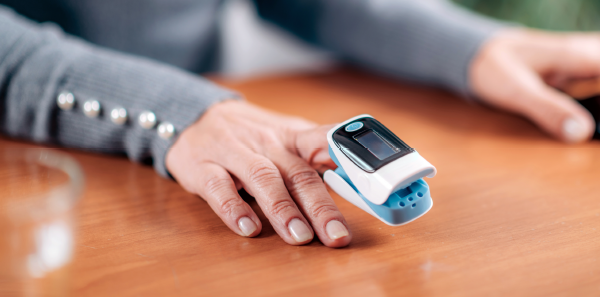
Editors’ Note: This article was accepted on Dec. 14, 2020, and was accurate at that time. Because information about SARS-CoV-2 and COVID-19 is evolving rapidly, please verify these recommendations and information.
Explore This Issue
ACEP Now: Vol 40 – No 02 – February 2021Until enough people are vaccinated so we achieve herd immunity, we will still be treating COVID-19. And while we know serious and severe COVID-19 when we see it, this disease can also be a silent killer. SARS-CoV-2 has spread insidiously through our communities; the true number of infections in the United States may be many times greater than the reported number of cases.1 Further, approximately 50 percent of transmission is thought to be from asymptomatic persons.2
We tend to think about the most acute phase of COVID-19. But we are also learning about how this disease progresses insidiously in the lungs subacutely. Autopsy studies have often found diffuse alveolar damage and microthrombi in the lungs. Yet many patients with COVID-19 pneumonia do not appreciate they have lung involvement—at least not until it is too late.
In most patients who develop lung involvement, “silent hypoxia” and pneumonia visible on imaging occur about five to 10 days after initial infection. Early in the pandemic, Shah et al found that among 77 patients diagnosed from the emergency department with COVID-19, 22 went on to develop hypoxia within a few days.3 The majority of them did not feel subjectively worse. They only returned to the hospital because of pulse oximetry monitoring and telehealth monitoring. Eight of these patients ended up in the ICU, six eventually were intubated, and two died.
There is no cure for COVID-19, but the disease course appears to be modifiable in some ways. One of the major changes is our approach to oxygen therapy. Oxygen administration lessens the work of breathing, decreases respiratory rate, and lessens inspiratory force. It is theorized this may modify what would otherwise be progressive patient self-inflicted lung injury. Awake proning with nasal oxygenation and steroids (dexamethasone in particular) have both become standard of care for patients with hypoxia.4,5
The risk of developing COVID-19 lung injury varies based on many factors, including age and comorbidities but also race and gender. We can estimate that between one in 25 and one in 50 who test positive for SARS-CoV-2 will end up developing COVID-19 pneumonia. Moreover, the readmission rate for those hospitalized for COVID-19 may be as high as 20 percent.6 The ability to identify which of these patients will require admission (and even readmission) would be a great advantage. To some extent, we already can. The single best predictive biomarker of severe COVID-19 pneumonia is not a blood test. It’s pulse oximetry.
Since the pandemic began, experts in Germany have closely monitored those diagnosed with COVID-19, doing daily health visits including measuring pulse oximetry. Their outcomes have been better than those in the United States. Fortunately, that approach has caught on in at least parts of the United States.
Last spring and summer, the Federal Communications Commission began rolling out a COVID-19 telehealth program that provided funding to hospitals and health care centers to purchase devices for telehealth and remote monitoring of patients and families affected by COVID-19.7 That support is necessary to provide equipment, personnel support, and patient education to enable home pulse oximetry monitoring, particularly in vulnerable populations. Progress has been made. In June 2020, the state of Vermont initiated a statewide government-sponsored universal postdiagnosis pulse oximetry monitoring program. Jennifer Read, MD, MS, MPH, an epidemiologist at the Vermont Department of Health, had examined all deaths in her state from COVID-19 and correctly concluded that hypoxemia was a major contributing factor. Similarly, the New York City Department of Health recently launched what is likely the largest government-sponsored pulse oximetry program in the country and is supplying New York City hospitals with several hundred thousand pulse oximeters.
If we are to reduce the number of patients requiring ICU care, decrease hospital length of stay, and decrease morbidity and mortality, we need to identify and treat COVID-19-related lung disease earlier. This will not save everyone; some patients develop progressive respiratory failure despite initiation of early treatment. Though our treatment regimens have improved, we need to identify and treat COVID-19 patients earlier—before they need ICU-level care and advanced airway management.
In most of emergency care, the simple admonition to “return if worse” is a reasonable discharge instruction. This is not sufficient for COVID-19, however. Patients should be closely monitored for 10–14 days after diagnosis with pulse oximetry checks three times a day. If pulse oximetry–measured oxygen saturation drops to 92 percent, patients should return to hospital for treatment. Walk testing (five minutes of ambulation) with a corresponding 5 percent or greater on pulse oximetry drop suggests an impending need for reevaluation and likely admission. [Editor’s Note: Pulse oximetry can be inaccurate in patients with darker skin tones and discharge instructions should account for this. Read more.]
Emergency physicians can help their communities prevent many avoidable deaths and lessen ICU resource demands if we advocate for and provide universal pulse oximetry monitoring of all SARS-CoV-2-positive patients who are safe for initial home management.
Pages: 1 2 | Single Page




No Responses to “Early Identification of Worsening COVID-19 Lung Disease May Save Lives”